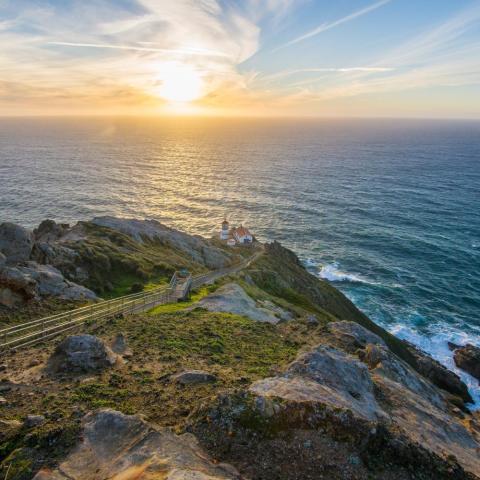
Mountain goats scheduled to be removed from Olympic National Park beginning Monday/NPS file
Starting Monday, a coalition of state and federal agencies, with support from Native American tribes, will begin moving mountain goats from Olympic National Park in Washington state to the northern Cascade Mountains to meet wildlife management goals in both areas.
This effort to translocate mountain goats from the Olympic Peninsula is a partnership between the National Park Service, the Washington Department of Fish & Wildlife, and the U.S. Forest Service to re-establish and assist in connecting depleted populations of mountain goats in the Washington Cascades.
Area tribes lending support to the translocation plan in the Cascades include the Lummi, Muckleshoot, Sauk-Suiattle, Stillaguamish, Suquamish, Swinomish, Tulalip, and Upper Skagit tribes.
In May, the National Park Service released the final Mountain Goat Management Plan that outlines the effort to remove the estimated 725 mountain goats from the Olympic Peninsula. Both the plan and the associated environmental impact statement were finalized after an extensive public review process that began in 2014.
This month’s two-week effort to move mountain goats to native habitat in the northern Cascades is the first translocation operation since the release of the final Mountain Goat Management Plan. Two additional two-week periods are planned for next year. Mountain goats were introduced to the Olympics in the 1920s.
“Mountain goat relocation will allow these animals to reoccupy historical range areas in the Cascades and increase population viability,” said Jesse Plumage, a Forest Service wildlife biologist.
While some mountain goat populations in the north Cascades have recovered since the 1990s, the species is still absent from many areas of its historic range, according to the Park Service.
Aerial capture operations will be conducted through a contract with a private company that specializes in the capture and transport of wild animals. The helicopter crew will use tranquilizer darts and net guns to capture mountain goats and transport them in specially made slings to the staging area on Hurricane Hill Road beyond the Hurricane Ridge Visitor Center in Olympic National Park. The staging area will be closed to public access.
The animals will be examined by veterinarians before WDFW wildlife managers transport them overnight to staging areas in the north Cascades for release the following day.
During this first round, WDFW will only translocate goats from the park to non-wilderness release sites in the Cascades. There will be no closures for release operations in the national forests in 2018. To maximize success, goats will be brought directly to alpine habitats that have been selected for appropriate characteristics. To access these areas, goats will be airlifted in their crates by helicopter.
WDFW plans to release the mountain goats at five selected sites in the Cascades this month. Two release areas are near mountain peaks south of the town of Darrington, on the Darrington District of the Mt. Baker-Snoqualmie National Forest. The others are near Mt. Index, on the Skykomish Ranger District of the MBS, Tower Peak in the Methow area of the Okanogan-Wenatchee National Forest, and the headwaters of the Cedar River Drainage, which is land owned by Seattle Public Utilities.
“The translocation effort will relieve issues with non-native mountain goats in the Olympics while bolstering depleted herds in the northern Cascades,” said Olympic National Park Superintendent Sarah Creachbaum. “Mountain goats cause significant impacts to the park ecosystem as well as public safety concerns.”
Eight years ago, Bob Boardman, of Port Angeles, Washington, was gored Oct. 16, 2010, on a trail near Klahhane Ridge some 17 miles south of Port Angeles. The 63-year-old was protecting other hikers from a goat, estimated at 370 pounds, when it gored him in the thigh and then reportedly stood over him as he bled to death.
Mountain goats follow and approach hikers because they are attracted to the salt from their sweat, urine, and food. That behavior is less likely in the north Cascades where visitors are more widely distributed than those at Olympic National Park, said Rich Harris, a WDFW wildlife manager who specializes in mountain goats.
“In addition, the north Cascades has an abundance of natural salt licks, while the Olympic Peninsula has virtually none,” Harris said. “Natural salt licks greatly reduce mountain goats’ attraction to people."
Along with the staging area closure on Hurricane Hill Road, several trails in Olympic National Park will be closed for visitor and employee safety during helicopter operations. For more information and updates, visit www.nps.gov/olym/planyourvisit/mountain-goat-capture-and-translocation.htm.




 Support Essential Coverage of Essential Places
Support Essential Coverage of Essential Places






